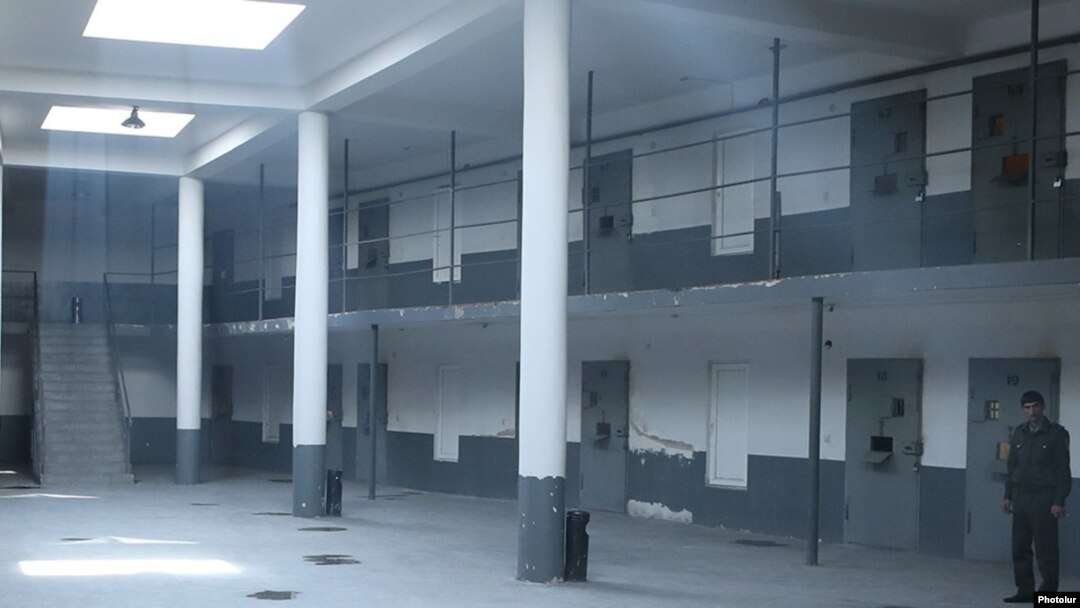The SPACE I survey conducted annually by the University of Lausanne for the Council of Europe, which contains information from the prison administrations of the member countries of the structure, has come out with a report on the statistics for 2023, also referring to the indicators of the countries of the South Caucasus. According to the report, from January 2022 to January 2023, a significant increase in the number of prisoners was recorded in Turkey (+15%), Azerbaijan (+13%), Armenia (+11%), and Georgia (+8.2%).
According to Armenpress, the published report explicitly states that overcrowding in prisons in Europe remains a severe problem. Prison overcrowding remains an acute and persistent problem for many European prison administrations.
The published annual report states that 16 prison administrations recorded a significant increase in the number of prisoners between January 2022 and January 2023: Republic of Moldova (+52%), North Macedonia (+26%), Cyprus (+25%), Turkey (+ 15%), Azerbaijan (+13%), Ireland (+12%), Montenegro (+11%), Armenia (+11%), Croatia (+10%), Hungary (+8.7%), Northern Ireland (Great Britain) (+8.3%), Georgia (+8.2%), Bulgaria (+8.1%), Austria (+6.8%), Italy (+5.7%) and Sweden (+5,1%). Imprisonment rates fell significantly only in Malta (-22%), Lithuania (-8.9%), Estonia (-8.8%) and Greece (-5.2%).
The countries with the highest incarceration rates are reported to be Turkey (408 prisoners per 100,000 population), Georgia (256), Azerbaijan (244), Republic of Moldova (242), Hungary (211), Poland (194), Slovakia (183). ), Albania (179), Czech Republic (176), Lithuania (174) and Latvia (172). Other countries with high incarceration rates are Montenegro (168), Serbia (162), Estonia (151) and North Macedonia (142).
The index of imprisonment in Armenia is 79.
The report also states that overall, the number of prisoners per 100 available places in Europe increased by 2% between January 31, 2022, and January 31, 2023 (from 91.7 to 93.5 prisoners). Seven prison administrations reported densities of more than 105 inmates per 100 available places, indicating severe overcrowding: Cyprus (166 prisoners out of 100 places), Romania (120), France (119), Belgium (115), Hungary (112), Italy (109) and Slovenia (107). Five prison administrations reported very high prison densities: Greece (103), Sweden (102), North Macedonia (101), Croatia (101) and Turkey (100). Other administrations reporting prison densities below 100 but on the brink of overcrowding are Ireland (99), Portugal (98), Finland (97), Denmark (97), England and Wales (UK) (97), and Azerbaijan (96).
As of January 31, 2023, 1,036,680 prisoners were detained in the 48 prison administrations of the Council of Europe member states that provided this information. Between January 2022 and January 2023, the average European prison population increased by 2.4% in countries with a population of over one million, from 113.5 to 116.2 prisoners per 100,000 inhabitants, the same as last year.
"For the second year in a row, the total number of prisoners in Europe increased slightly. This may still be a rebound from the reduction seen during the COVID-19 pandemic due to a decrease in offline crime during lockdowns, the release of prisoners in some countries, and a decrease in criminal justice activity. However, this increase starkly contrasts the overall strong downward trend in incarceration rates since 2013. It remains to be seen if there is a change in trend. The persistence of overcrowding remains an important challenge for many prison administrations," says Professor Marcelo Aebi, head of the SPACE research team at the University of Lausanne.
A Council of Europe report points out that violent and drug-related offenses account for more than half of the leading crimes for which European prisoners are serving sentences. Drug-related offenses are the most common (19% of the convicted population), followed by murder and attempted murder (13%), theft (12%), sexual offenses (8.9%), robbery (7.7%), and assault and attempted murder. (6.7%).
On January 31, 2023, on average, almost a third of prisoners in European prisons were in pretrial detention. Albania (55%), Armenia (53%), Luxembourg (49%), Switzerland (46%), the Netherlands (45%), Montenegro (42%) and Northern Ireland (UK) (41%) had the highest proportion of pretrial detainees. %). The Czech Republic (7.5%), Lithuania (11%), Poland (11%), Romania (12%) and North Macedonia (12%) had the lowest rate of pretrial detention.
On average, 27% of prisoners in European prisons were foreigners, although there were significant differences between countries. The prison administrations with the highest proportion of foreigners are Luxembourg (78%), Switzerland (71%), Greece (57%), Cyprus (55%), Austria (51%), Catalonia (Spain) (49%), Malta (49%) and Belgium (42%) in countries with more than 500,000 inhabitants. The lowest proportions were recorded in Romania (1.1%), the Republic of Moldova (1.5%) and Azerbaijan (1.9%).
"The proportion in Central and Eastern European countries is significantly lower; this coincides with the natural movement of the European population since the 2000s. Population growth in Western, Southern and Northern Europe and population decline in Central, South-Eastern and Eastern Europe," the report said.
As of January 31, 2023, the average age of prisoners in European penitentiary institutions remained 38. The lowest average age was recorded in Bulgaria (33), Sweden (34), France (35) and Denmark (35), and the highest in Serbia (50), Georgia (44), Italy (43), Portugal (41) and Spain ( 41). 14% of all prisoners were aged 18 to 25, 68% were aged 26 to 49, 15% were aged 50 to 64, and 3% were aged 65 or older. The vast majority of prisoners were men. Women: only 5%. The proportion of women was relatively high in Cyprus (9.2%), Malta (9.1%), Czech Republic (8.5%), Finland and Latvia (7.7%).
The University of Lausanne conducts the Council of Europe's SPACE polls every year. The SPACE I survey contains information from prison administrations in Council of Europe member states.



















